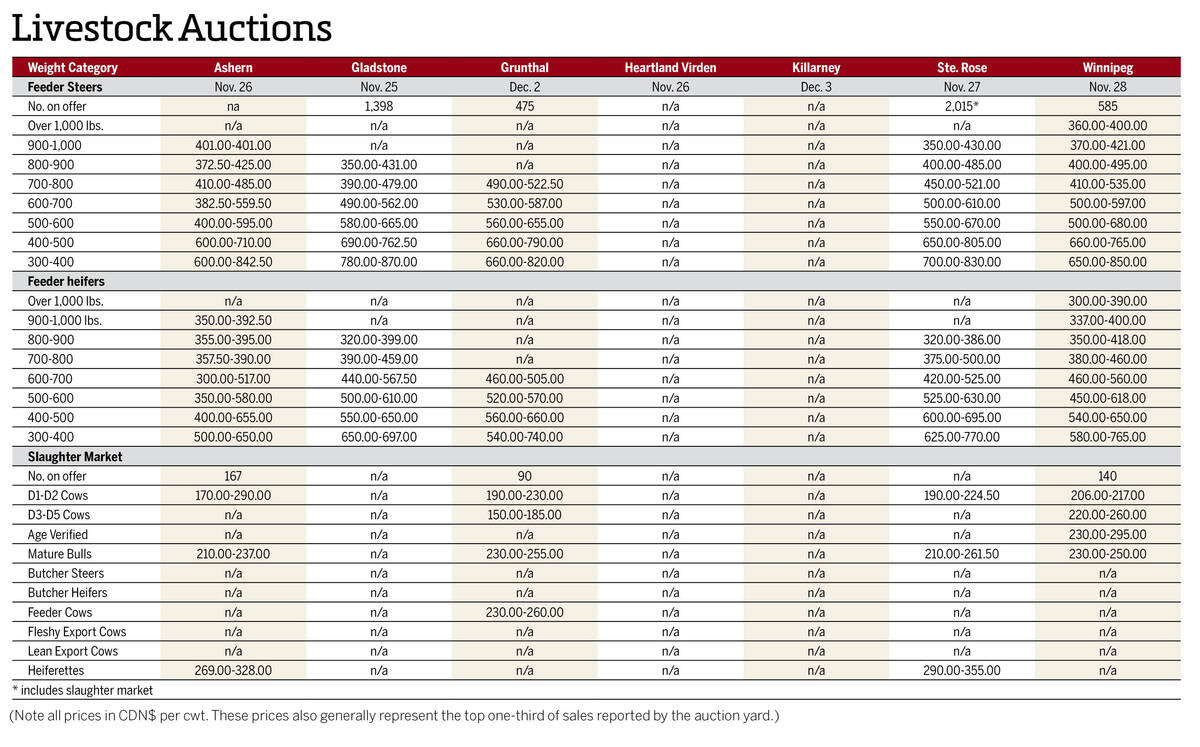COVID-19 remained the overarching feature of just about everything in early April — the grain and oilseed markets included. The virus has touched all aspects of society and the ongoing uncertainty of what it means for trade led to choppy activity in the agricultural commodities.
Canola futures bounced around during the week ended April 9, but values appear relatively rangebound for the time being, with the May contract stuck in a range between $450 and $475 per tonne.
Any logistical issues brought up by the pandemic could sway the markets, with transportation delays in South America already finding their way to move the Chicago soy complex. International borders are still generally open for the movement of agricultural commodities, but what happens if a port is forced to close or if other stricter measures to prevent the virus spread are enacted?
Read Also

Manitoba cattle prices, Dec. 3
Cattle prices from Manitoba’s major livestock auction marts during the week Nov. 25-Dec. 2, 2025.
Erratic movement in the equity, currency and energy markets also have a role to play in where grain prices could be headed. The old adage that ‘people still need to eat’ should provide a price floor, but at the same time the situation is unprecedented and determining what movements in those outside markets will mean for agricultural prices is guesswork at best in the current environment.
Spring is just around the corner in the Prairies, despite the last breaths of winter that keep returning. What ‘social distancing’ will mean at the farm level will be a factor in the weeks and months to come.
Up to 1.5 million tonnes of canola were left unharvested last fall and will need to be dealt with before producers with crop still out turn their attention to planting the 2020 crop. While there have been some anecdotal reports that the overwintered canola didn’t end up too bad, it is still expected to be moved fairly quickly off of the combine and into the commercial system.
Those supplies could temper any seasonal strength that canola often sees at this time of year, although that is more likely to show up in cash basis levels than in the futures.
For the U.S. markets, soybeans have seen similar choppiness to canola, while corn is a bit more bearish due to its close ties to crude oil. With oil prices crashing, the economics of producing ethanol from corn are not looking so great.
Wheat, meanwhile, has shown some strength amid the general chaos of the world markets due to its status as a staple food crop. A number of wheat-exporting countries may be looking to reduce sales in an effort to shore up domestic supplies, while traditional buyers are also adding to their stocks.
Weather concerns in some parts of the Northern Hemisphere were also a bit supportive for wheat, although the early quality reports out of the U.S. look relatively favourable for the country’s winter wheat crop.
















